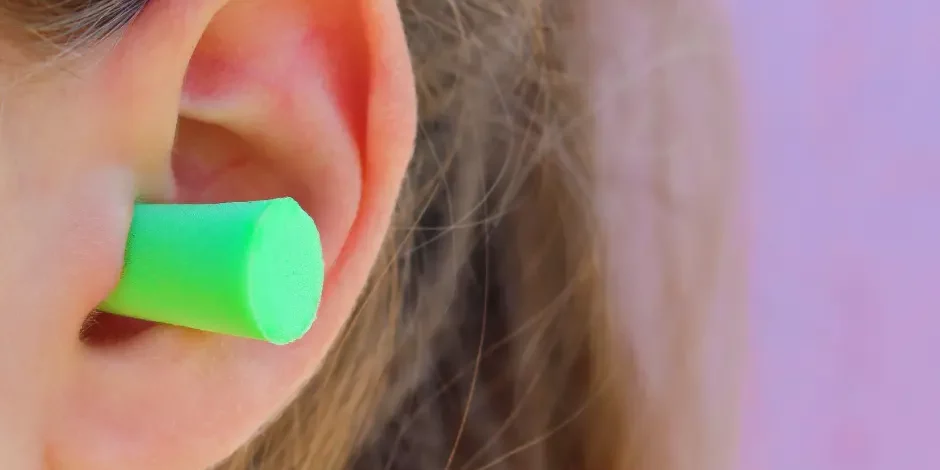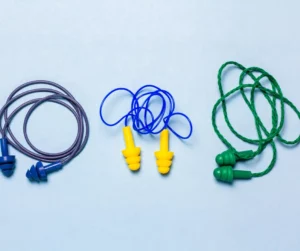Hearing Safety 101: Actionable Tips for Healthy Hearing

In today’s world, where noise pollution is ever-increasing, understanding and implementing hearing safety tips is more important than ever. Our ears are exposed daily to a variety of sounds, from the gentle hum of household appliances to the roaring engines of city traffic. Protecting our hearing is not just about avoiding loud noises; it’s about being proactive in every sound environment we encounter. This comprehensive guide provides essential hearing safety tips to help you navigate the noisy world while preserving your auditory health. Whether you’re at home, work, or enjoying leisure activities, these tips will ensure your ears are well protected, maintaining your hearing quality for years to come.
Understanding Decibels and Noise Impact
Knowing which sounds are harmful or safe for our ears is crucial. Decibels (dBA) measure sound levels. Safe sounds usually remain at or below 70 dBA. Risky noise levels start at 85 dBA, potentially causing hearing loss. Everyday noise examples include conversations (60-70 dBA), lawnmowers (80-100 dBA), motorcycles (80-110 dBA), and concerts (94-110 dBA), with more intense sounds like sirens (110-129 dBA) and fireworks (140-160 dBA).
Noise Exposure and Its Consequences
Exposure to loud or persistent noise leads to irreversible hearing damage. Regular exposure above 85 decibels is risky. Sudden, loud sounds, such as gunshots, are particularly harmful. Besides hearing loss, noise can cause tinnitus, stress, elevated heart rate, and hinder task performance.
Understand more about different types of hearing loss.
Essential Hearing Safety Tips
Maintaining ear health requires proactive measures. These practices safeguard hearing across different settings.
- Check Noise Levels: Use tools like NIOSH’s Sound Level Meter app for noise assessment.
- Use Ear Protection: Employ earplugs or earmuffs in high-noise environments.
- Manage Device Volume: Ensure safe listening levels on personal devices.
- Schedule Hearing Tests: Regular check-ups are vital, especially for those frequently exposed to loud noise.
- Spread Awareness: Share information about hearing risks.
- Adhere to Workplace Safety: Follow noise protection guidelines at work.
- Maintain Ear Hygiene: Keep ears clean and avoid inserting objects.
- Take Noise Breaks: Allow ears to rest post loud noise exposure.
- Prefer Noise-Canceling Headphones: Reduce volume levels by using these headphones.
- Be Noise-Conscious: Stay aware of daily noise exposure.
- Foods for Hearing Health: Incorporate hearing-boosting nutrition into your diet for added ear health benefits.
Avoid these harmful habits for hearing safety:
- Avoid Loud Noises: Limit exposure to high-decibel events.
- Don’t Use Cotton Swabs: They can damage the ear canal and eardrum.
- Control Music Volume: Moderate listening levels protect against gradual hearing loss.
- Be Alert to Hearing Loss Signs: Seek professional advice if you notice symptoms.
- Prioritize Ear Protection: Always use hearing protectors in noisy areas.
- Seek Timely Professional Help: Address hearing issues without delay.
- Avoid Unverified Treatments: Consult experts for hearing concerns.
- Limit Headphone Use: Use headphones sparingly with regular breaks.
- Advocate for Workplace Safety: Discuss hearing protection with employers.
- Consistently Practice Hearing Safety: Incorporate ear protection into your daily routine.

Choosing Safety Hearing Protection
Selecting appropriate ear protection fights against noise-induced hearing loss, a common yet preventable condition. It’s essential to understand the various factors that influence the effectiveness of different hearing protectors.
Factors in Selecting Ear Protection
- Noise Level Assessment: Knowing your environment’s decibel (dB) level is crucial. Different activities and locations emit varying noise levels, and understanding these can guide you in choosing the right protection.
- Exposure Duration: The length of time you’re exposed to noise plays a significant role in potential hearing damage. Even moderate noise levels can be harmful over extended periods.
- Type of Noise: Sounds vary not just in intensity but also in quality. For instance, continuous noise like machinery hum and impulsive noise like fireworks require different types of protection.
- Comfort and Fit: The effectiveness of ear protection also depends on how well it fits and how comfortable it is to wear. Ill-fitting protectors can reduce the level of protection.
- Noise Reduction Rating (NRR): This rating indicates how effectively a hearing protector reduces noise exposure. The higher the NRR, the more significant the noise reduction.
Varieties of Hearing Safety Protectors
- Earplugs: These are inserted into the ear canal and come in materials like foam, silicone, or wax. They’re versatile so that you can use them in various settings.
- Earmuffs: These cover the entire outer ear and typically offer a higher NRR. They’re ideal for environments with constant, high-level noise.
- Dual Protection: Combining earplugs and earmuffs offers maximum protection in extremely loud environments.
- Canal Caps: Suitable for intermittent noise exposure, a stiff band connects these and is easy to put on and remove.
Maintaining Ear Protection
- Regular Inspection: Regularly check your ear protectors for signs of wear and tear. Replace damaged protectors immediately to ensure optimal protection.
- Proper Storage: Store your ear protection in a clean, dry environment to maintain their condition and prolong their lifespan.
- Educating Others: Sharing knowledge about ear safety and hearing protection’s importance helps foster a hearing health awareness culture.
Optimal Times to Use Safety Hearing Protection
You should use ear protectors in environments with potentially harmful noise levels, such as auto races, concerts, and industrial workplaces. They should also be readily available for unexpected loud noise occurrences. It’s important to select protectors that allow for clear communication in noisy settings. Consulting with a hearing health professional can provide tailored advice, ensuring you choose the most effective protection for your needs. Remember, the right ear protection not only preserves your hearing but also enhances your overall quality of life in a noisy world.

Partner with Stanford Hearing for Hearing Safety
Hearing safety is a commitment to life quality and world connection. Understanding when and how to use ear protectors is necessary. At Stanford Hearing, we offer expert advice and custom solutions for hearing protection. Contact us for personalized assistance and embrace a future of clear hearing. Protecting your hearing is a joint effort; let’s do it together.
